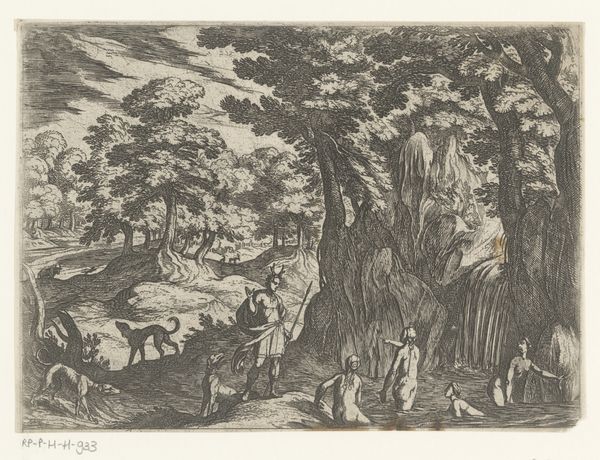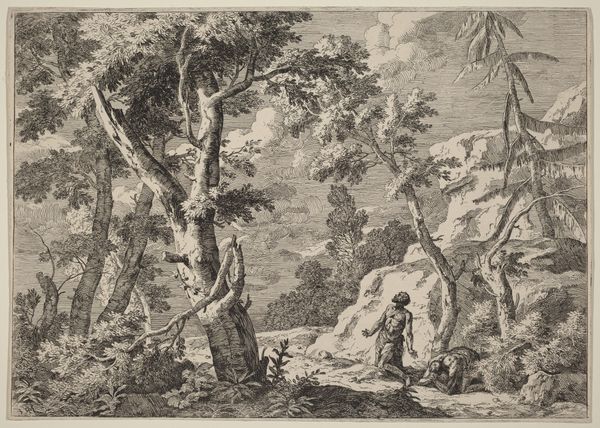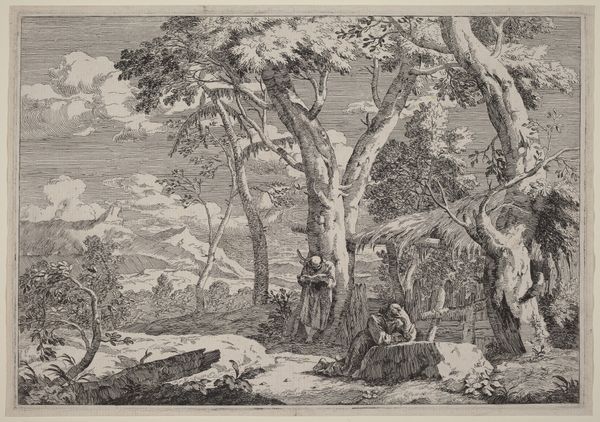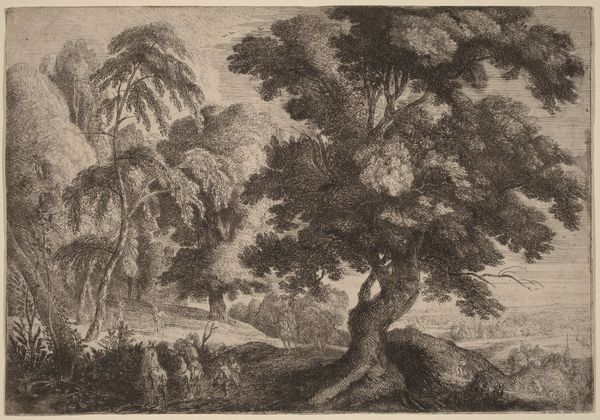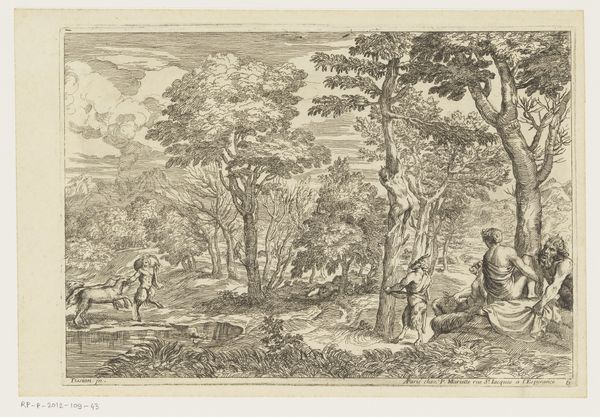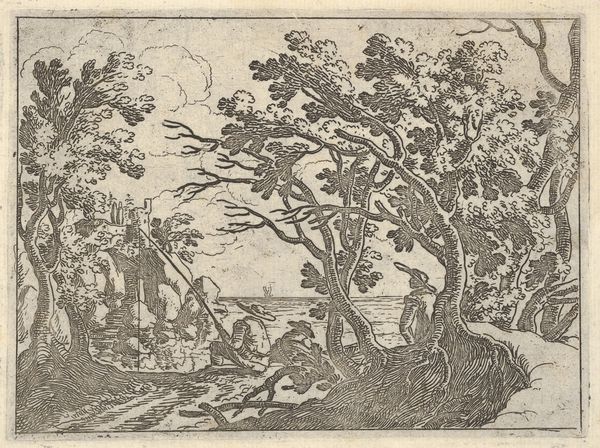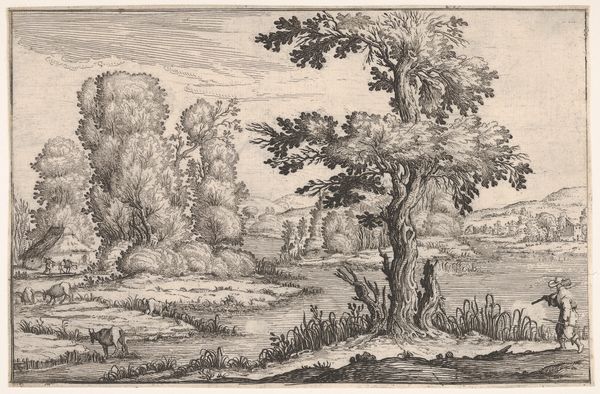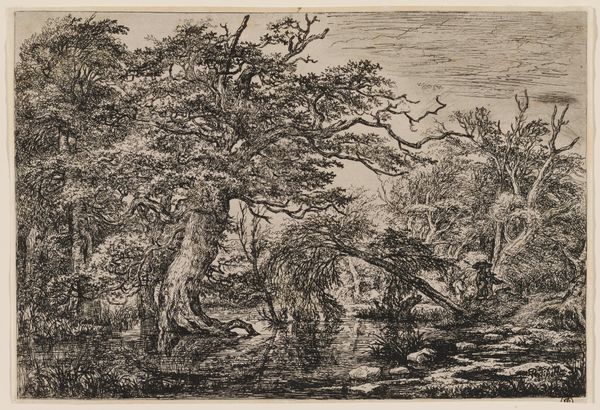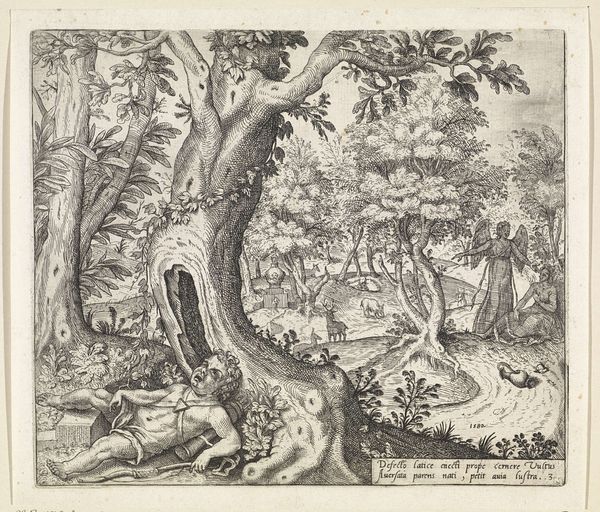
River View with Christ Tempted by the Devil 1568 - 1629
0:00
0:00
drawing, print, etching
#
drawing
#
narrative-art
# print
#
etching
#
landscape
#
mannerism
#
history-painting
Dimensions: Plate: 8 1/8 x 10 3/4 in. (20.7 x 27.3 cm) Sheet: 9 3/4 x 12 1/2 in. (24.7 x 31.7 cm)
Copyright: Public Domain
Curator: This is "River View with Christ Tempted by the Devil," a print created sometime between 1568 and 1629, attributed to Aegidius Sadeler II. The work is currently held in the collection of the Metropolitan Museum of Art. Editor: Immediately, I’m struck by the incredibly dense textures and the dramatic use of light. You have this dark, brooding landscape and then these figures bathed in heavenly glow – very compelling use of the etching process. Curator: Absolutely. It is a beautiful example of Mannerist printmaking, with that exaggerated, almost theatrical landscape. What's also important to consider is how prints like this circulated widely. They allowed artists' visions, and religious narratives, to reach a broad audience in a pre-modern era. Editor: The etching would have allowed for quite a bit of detail to be reproduced, right? You really see the different textures, from the rough bark of the trees to the rippling water. And the skill required to produce those tonal gradations, to suggest light and shadow, using just line work. It's very labor-intensive. I mean think about the process, coating the plate, incising the lines, the repeated biting with acid… Curator: Exactly. And that kind of accessibility could challenge existing social hierarchies, right? Who had access to painted religious scenes versus who could purchase a relatively affordable print? That opens up interesting questions about religious experience and individual interpretation. Editor: And where this kind of imagery might show up. You know, these prints could easily adorn the walls of private homes, or in workshops as inspiration. They might even be sources of visual instruction, so it is not a “high art” object necessarily. Curator: Precisely. That speaks to the powerful role imagery played in shaping beliefs and behaviors. So, how do we interpret those landscapes in terms of political agendas, not simply religious experience? It encourages viewers to be active readers of the print’s meaning. Editor: Thinking about materiality shifts how we understand the role of the artist too. We tend to lionize them but overlook that they are using materials and technical skills refined by generations of artisans who did the physical labor that helped in bringing this artwork into being. It's really important to acknowledge those complex interdependencies. Curator: True. The piece as a window into the artistic process and into its broader role in society. Editor: Agreed. And looking closely at materials reveals a larger picture than a religious narrative or landscape tradition.
Comments
No comments
Be the first to comment and join the conversation on the ultimate creative platform.
